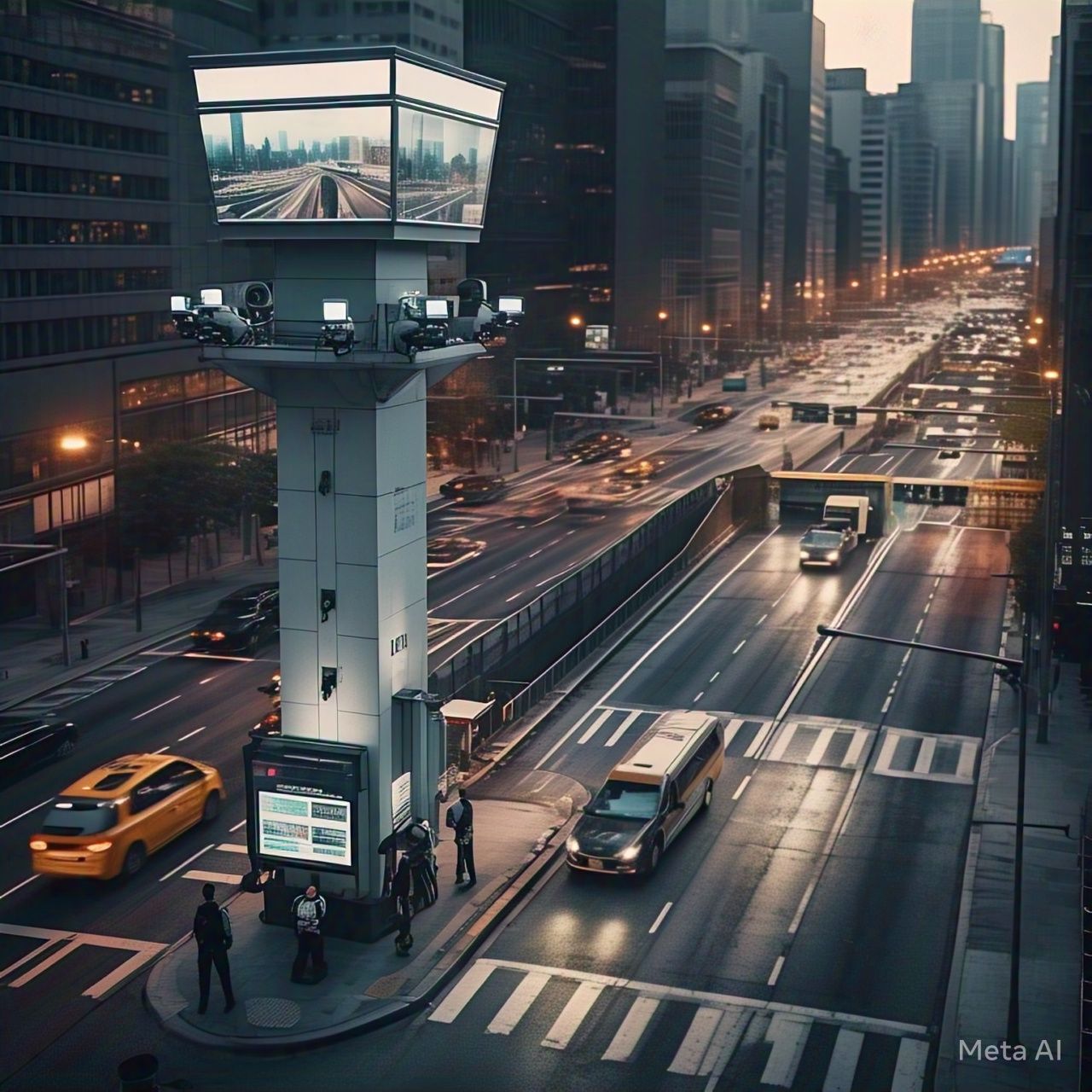Table of Contents
- Introduction
- The Role of AI in Traffic Surveillance
- How AI Enhances Traffic Monitoring
- AI and Law Enforcement Collaboration
- Benefits of AI-Powered Traffic Surveillance
- AI in Traffic Violation Detection
- Crime Prevention and Traffic Security
- Challenges and Ethical Concerns
- The Future of AI in Traffic Surveillance
- Conclusion
- FAQs
1. Introduction
Traffic surveillance has long been a critical component of urban security and law enforcement. Traditional methods, such as CCTV cameras and manual monitoring, often struggle with accuracy, real-time responsiveness, and large-scale data analysis. AI-driven traffic surveillance is revolutionizing this sector by using machine learning, computer vision, and predictive analytics to enhance security, detect violations, and assist law enforcement agencies in maintaining order on the roads.
2. The Role of AI in Traffic Surveillance
AI plays a crucial role in modern traffic surveillance by enabling:
- Real-time vehicle and pedestrian monitoring
- Automated license plate recognition (ALPR)
- Predictive analytics for accident prevention
- Crime detection through behavioral analysis
- Enhanced data collection for urban planning
These capabilities ensure improved traffic management and enhanced security for both drivers and pedestrians.
3. How AI Enhances Traffic Monitoring
AI-powered traffic surveillance systems integrate several advanced technologies, including:
- High-resolution smart cameras that analyze vehicle movement.
- AI-driven facial recognition to track individuals involved in criminal activities.
- Machine learning algorithms that detect abnormal driving behavior.
- Cloud-based analytics platforms that process and store surveillance data.
Table: Traditional vs. AI-Powered Traffic Surveillance
| Feature | Traditional Surveillance | AI-Powered Surveillance |
|---|---|---|
| Data Processing | Manual, time-consuming | Real-time, automated |
| Violation Detection | Requires human oversight | AI-driven auto-detection |
| Accuracy | Prone to errors | High precision |
| Cost Efficiency | High operational costs | Cost-effective long-term |
4. AI and Law Enforcement Collaboration
Law enforcement agencies leverage AI in traffic surveillance to:
- Identify and track stolen vehicles
- Assist in criminal investigations using AI-driven analytics
- Monitor high-risk areas for suspicious activity
- Improve traffic law enforcement through automated ticketing
AI enhances the efficiency of police forces, allowing them to focus on critical tasks rather than routine traffic monitoring.
5. Benefits of AI-Powered Traffic Surveillance
AI-driven traffic surveillance offers numerous advantages:
- Enhanced road safety through real-time violation detection
- Reduced response time for law enforcement in emergencies
- Lower operational costs compared to manual monitoring
- Accurate data collection for traffic optimization and planning
- Improved public trust through transparent and fair law enforcement
6. AI in Traffic Violation Detection
AI automatically detects violations such as:
- Speeding violations through AI-powered speed cameras
- Red-light running using intelligent traffic signals
- Wrong-way driving with machine learning pattern recognition
- Reckless and aggressive driving through behavioral analysis
Automating violation detection ensures fair law enforcement and reduces human biases in traffic monitoring.
7. Crime Prevention and Traffic Security
AI surveillance contributes to crime prevention by:
- Identifying stolen or suspicious vehicles in real-time
- Recognizing suspicious patterns of movement
- Alerting law enforcement to potential security threats
- Providing evidence for criminal investigations
AI-driven systems help authorities prevent and respond to security incidents more effectively.
8. Challenges and Ethical Concerns
Despite its advantages, AI in traffic surveillance faces several challenges:
- Privacy Concerns – AI-powered cameras and facial recognition raise ethical questions about mass surveillance.
- Bias in AI Algorithms – AI systems must be trained on diverse datasets to ensure fairness.
- Cybersecurity Risks – AI-driven surveillance systems are vulnerable to hacking and data breaches.
- Legal and Regulatory Issues – Striking a balance between security and individual privacy rights is crucial.
- High Initial Investment – AI surveillance infrastructure requires significant funding.
Addressing these challenges is key to ensuring ethical and effective AI deployment in traffic monitoring.
9. The Future of AI in Traffic Surveillance
Future developments in AI traffic surveillance include:
- AI-powered drones for aerial traffic monitoring
- Integration with autonomous vehicles for real-time traffic control
- Predictive AI models to forecast congestion and accidents
- Blockchain technology to enhance surveillance data security
These advancements will further improve traffic management and law enforcement effectiveness.
10. Conclusion
AI-driven traffic surveillance is revolutionizing road safety, law enforcement, and urban mobility. With its ability to analyze vast amounts of data in real-time, detect violations, and assist law enforcement, AI enhances traffic management and public security. However, addressing privacy concerns and regulatory challenges is crucial for its ethical implementation. As technology advances, AI will continue to play a pivotal role in creating smarter and safer cities.
11. FAQs
1. How does AI improve traffic surveillance?
AI enhances traffic surveillance through real-time monitoring, automated violation detection, predictive analytics, and collaboration with law enforcement.
2. Can AI replace human traffic police?
AI can assist and enhance the efficiency of human traffic police but cannot completely replace them, as human judgment is still necessary in complex situations.
3. What are the privacy concerns with AI traffic surveillance?
Privacy concerns include mass surveillance, facial recognition tracking, and potential misuse of collected data.
4. How accurate is AI in detecting traffic violations?
AI-driven systems have high accuracy in detecting violations like speeding, red-light running, and reckless driving, reducing human errors and biases.
5. What is the future of AI in traffic law enforcement?
The future includes AI-powered drones, predictive analytics, integration with smart city infrastructure, and advanced data security measures.
Citations:
- National Highway Traffic Safety Administration (NHTSA) – AI in Traffic Law Enforcement
- World Economic Forum – AI and Smart City Surveillance
- International Transport Forum – AI in Urban Traffic Management
- MIT AI Lab – Machine Learning for Traffic Monitoring
- Smart Cities Council – AI and Public Safety




